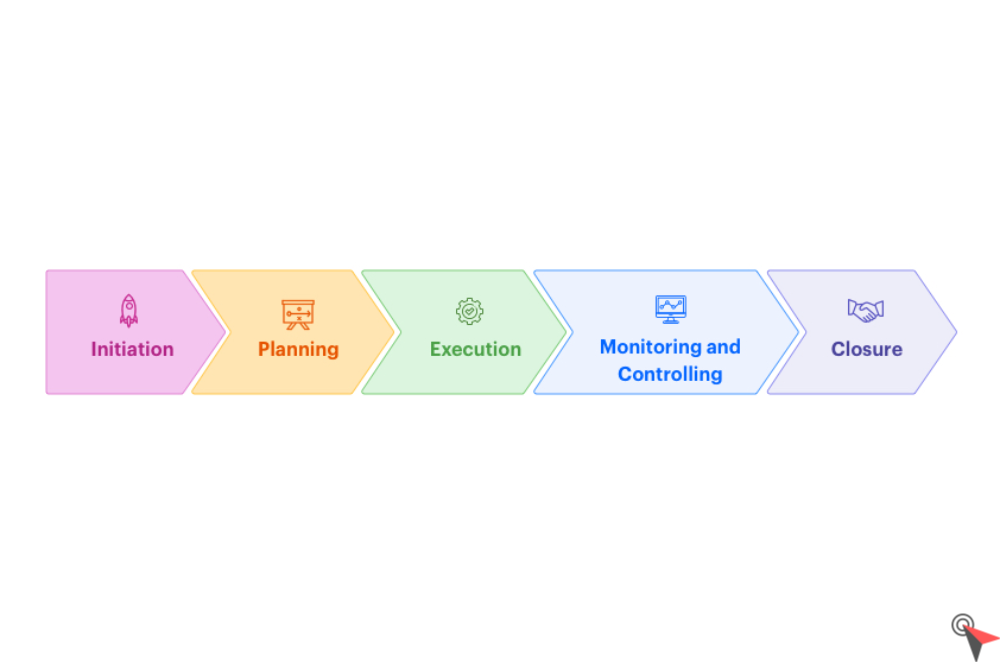The 5 Phases of Project Management
November 13, 2022


There are different schools of thought on the number of Phases of Project Management. Some claim there are 3 phases, others say there are 5. Basically, the PMBOK points out that the number of phases is determined by the project team and the type of project.
Project management is uniquely based on the idea that a project goes through a number of phases characterized by a distinct set of activities or tasks that take the project from conception to conclusion. Projects are large and small, with constraints such as cost, time and resources.
Before analyzing the project phases and their organization, it is important to note that one of the best ways to effectively manage a project is to implement an overall solution. Project management software helps teams successfully launch a project, plan it, and then execute it through a set of clearly defined expectations and goals. This gives teams easier access to each stage of the project, reducing silos and increasing productivity. Here are five of the best project management software to help companies properly scale and complete projects.
As projects become more and more complex, it is important to structure and define them throughout their life cycle. This way you won’t get lost in the hustle and bustle. One way to organize a project is to sort it into 5 phases:
The 5 phases of project management include initiating, planning, executing, monitoring and closing the project. The Project Management Institute (PMI) originally developed these five phases.
A project is formally launched, named and broadly defined during this phase. Project sponsors and other important stakeholders diligently decide whether or not to commit to a project. Depending on the nature of the project, feasibility studies are carried out. Or, as may be necessary, in the case of an IT project – the collection and analysis of requirements is carried out during this phase. In the construction sector, a project charter is completed in this phase.
A project management plan is developed, including individual plans for – cost, scope, duration, quality, communication, risk and resources. Some of the important activities that mark this phase are the creation of a WBS, the development of a schedule, milestone charts, GANTT charts, resource assessment, scheduling dates and modes of communication with stakeholders based on important milestones, deadlines and deliveries. A risk management plan identified and unidentified is determined as it may affect certain aspects of a project later on. Risk management planning includes: risk identification and analysis, risk mitigation approaches and risk response planning.
A project deliverable is developed and completed, according to a mapped plan. Many of the tasks during this phase capture project parameters through tasks such as project status meetings and updates, other project status reports, and more. progress, human resources needs and performance reports. This phase is important because it will help you understand whether your project will be a success or a failure.
Occurring at the same time as the execution phase, it consists mainly of measuring the performance and progress of the project according to the project plan. Project scope verification and control takes place to verify and monitor the evolution of the project scope, and change control to track and manage changes in project requirements. The calculation of key performance indicators in terms of cost and time is done to measure the degree of variation, if any, and if so, corrective actions are determined and suggested to keep a project on track. Preventing project failure requires examining why projects are likely to fail and ways to prevent failure.
A project is officially closed. It includes a series of important tasks such as delivering the product, relieving resources, rewarding team members, and officially terminating contractors in case they were employed on the project.
